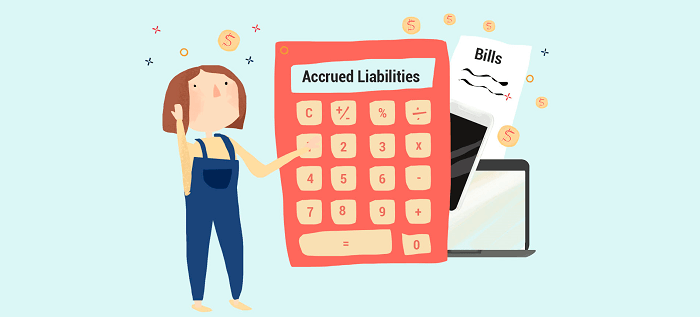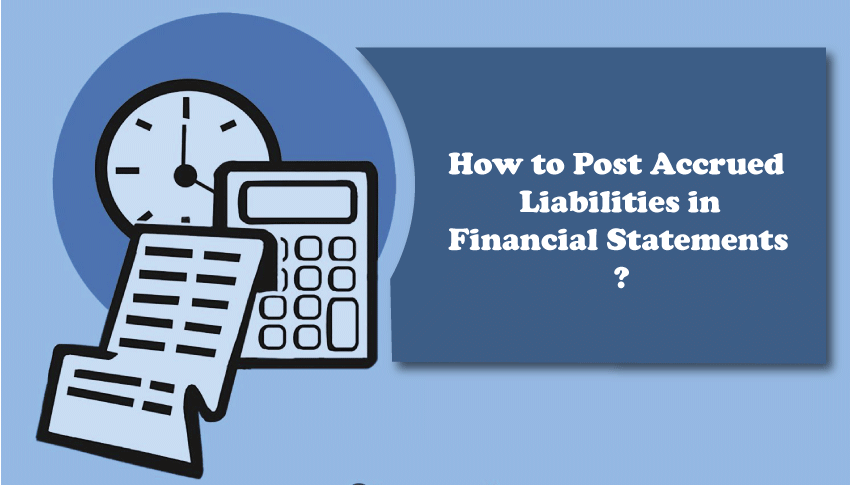Accrued Liability: Overview, Types, and ExamplesWhat exactly is Accrued Liability?It is simply an obligation an entity assumes, usually without a confirming document, such as a supplier invoice. The concept is most commonly used when a company has consumed goods or services from a supplier but has yet to receive an invoice from the supplier. 
Suppose an invoice is received after the end of an accounting period. In that case, the accounting staff records it as an accrued liability, typically based on quantity data in the receiving log and price data in the authorizing purchase order. The use of the accrued liability concept is helpful in recording expenses and liabilities in the period in which they were incurred. In-depth understanding of Accrued LiabilityA financial obligation incurred by a corporation within a certain accounting period is referred to as an accrued liability. While the goods and services in question may have already been provided, the firm must still pay for them during that period, and they must be documented in the general ledger accordingly. Even though the cash flow has yet to occur, the firm still pays for the benefit received. Accrued liabilities, also known as accrued expenses, exist only when the accrual method of accounting is used. The accrued liability concept is related to timing and the matching principle. In accrual accounting, all expenses must be disclosed in financial statements in the period in which they are generated, which may vary from the period in which they are paid. To provide financial statement consumers with accurate information about the expenditures necessary to produce revenue, expenses are recorded at the same time as associated revenues. The cash basis, also known as the cash method, is an alternative method for recording expenses. However, it does not accrue liabilities. Accrued liabilities are recorded in the financial records during one period. They are normally reversed in the next month when they are paid. The real expenditure is recorded at the correct monetary amount when payment is completed in full. What are the different kinds of Accrued Liabilities?Companies must account for two categories of accrued liabilities: routine and non-routine. The following is some of the most important information about each of them: Routine Accrued LiabilitiesA recurring liability is another term for a routine liability. As a result, these expenses are frequently generated as part of a business's day-to-day operations. For example, a routine or recurring liability is interest owed to a creditor on a financial commitment, such as a loan. Interest may be charged to the corporation but will be paid during the next accounting period. Non-Routine Accrued LiabilitiesThese are out-of-the-ordinary expenditures. As a result, they are often referred to as infrequent or non-routine accrued liabilities. They are not part of a company's routine operations. A non-routine liability is an unanticipated expenditure for which a corporation is billed but would not have to pay until the following accounting period. When do Accrued Liabilities take place?Accrued liabilities can develop for various causes or as a result of events in the usual business course. As an example:
How to post accrued liabilities in financial statements?
An individual can post accrued liabilities in the income statement and balance sheet at the end of the accounting period. Doing so gives investors a clear idea of a firm's financial position. Here's a guide on how to account for accrued liabilities: Making a Journal EntryFirst, estimate the expense cost to create a journal entry for an accrued expense. For example, a company might be preparing financial statements at the end of the month, but the utility bill covering the month arrives halfway through the next month. If the company pays an average of $300 on utilities monthly, an individual can use that figure as their estimate for the utility expense. As a result, they can post a $300 debit to the spending account and a $300 credit to the accrued liabilities account. Posting Accrued Liabilities in the Income StatementAn income statement, often known as a profit and loss statement, is one of the financial documents that a company uses to evaluate its financial performance over a fiscal year. This report measures success based on net income. The net income formula is as follows: Net income = Revenue - Expenses Suppose someone estimates that they spend $300 per month on utilities. In that case, they can use that amount to estimate the utility expenditure when generating an income statement. As a result, they can simply report a $300 accrued liability as an expense, lowering their net income by $300. Posting Accrued Liabilities in the Balance SheetWhen preparing balance sheets, one can record accrued liabilities in the "Current liabilities" category. Normally, balance sheets have a column for "Accounts Payables and Accrued Liabilities", which are all the unpaid expenses that the company incurs during a given accounting period, so if she/he estimates that the utility bill is around $300, they can record this figure on a balance sheet under the current liabilities section. Example Companies can accrue liabilities for a variety of reasons. As such, many different kinds of expenses fall under this category. The following are some of the most common examples:
Why is it so crucial?When a corporation uses accrual accounting to create financial statements, they are more accurate since it is a comprehensive measure of the transactions and occurrences for each period. Accrual accounting involves recording the entries for accrued liability and accrued revenue in the same period the transaction is made, regardless of whether payment has been made or not. This complete picture helps analysts to better understand and anticipate a company's financial health. On the other hand, the cash basis method of accounting only records financial transactions and events when money is exchanged, resulting in revenue and account balance understatements and overstatements. Accrued Liability Vs Accounts PayableAccounts payable and accrued liabilities are both types of liabilities that firms must pay. Nonetheless, there is a distinction between the two. Accrued liabilities are costs that have yet to be invoiced, either because they are recurring expenses that do not need billing (for example, payroll) or because the organization still needs to receive a bill from the vendor (i.e., a utility bill). Besides, accounts payable (or payables) are often short-term commitments that must be paid within a specific time frame. Creditors send invoices or bills documented by the recipient firm's AP department. The department then issues payment for the total amount by the due date. Paying down these bills within the time frame given helps businesses avoid default. The Bottom LineIt is critical to understand and handle the company's finances. When adopting the accrual method of accounting, one must consistently guarantee that all costs have been accrued in the relevant period, whether it is an accrued liability or accrued revenue. |
 For Videos Join Our Youtube Channel: Join Now
For Videos Join Our Youtube Channel: Join Now
Feedback
- Send your Feedback to [email protected]
Help Others, Please Share









